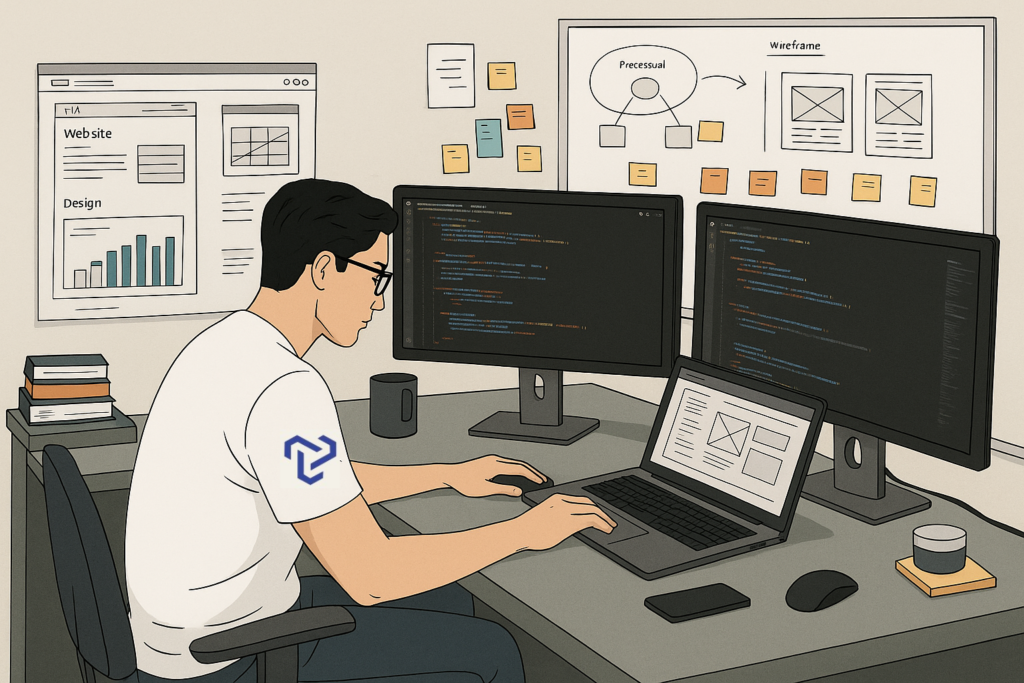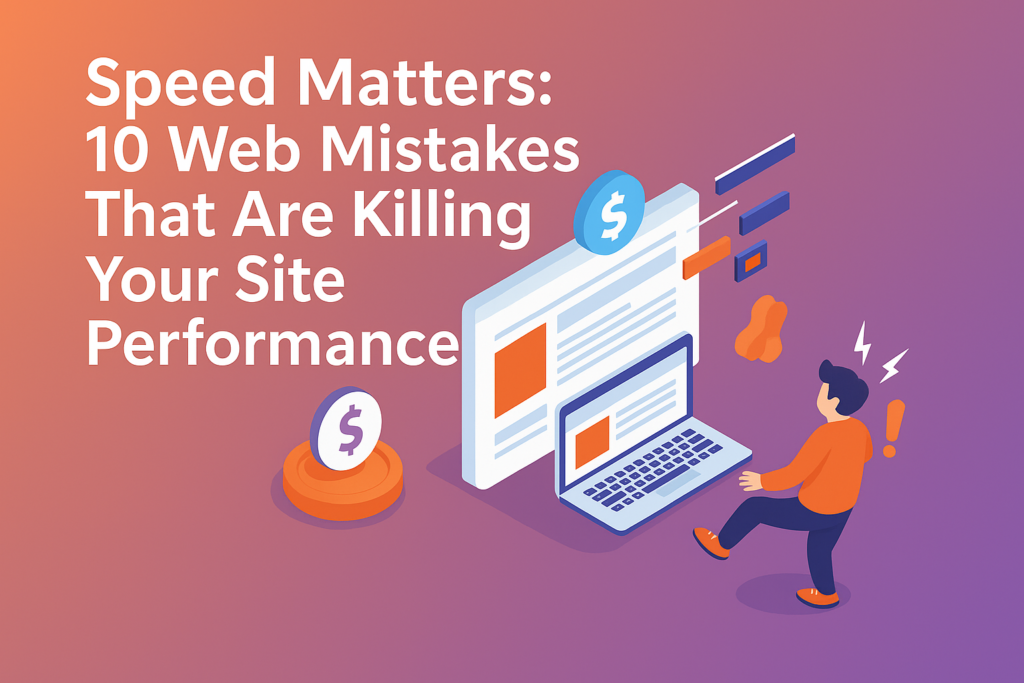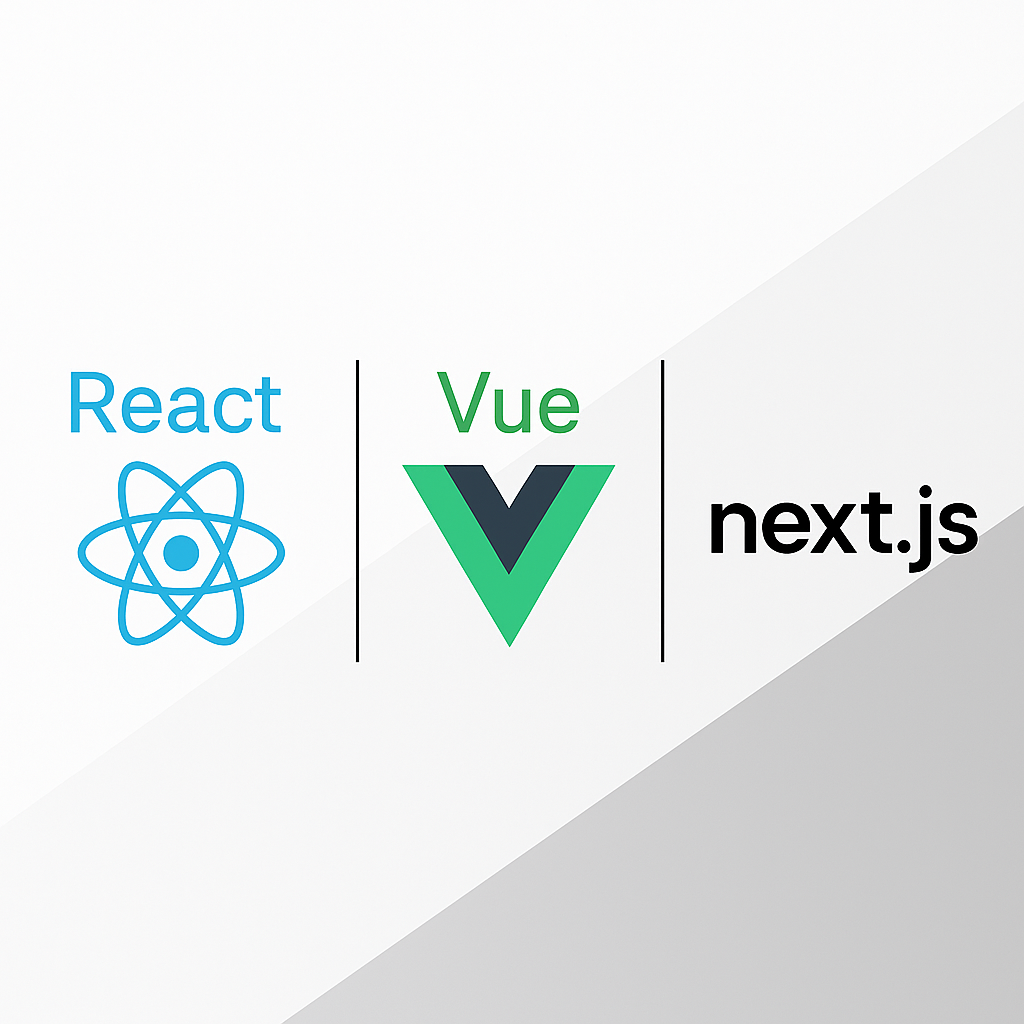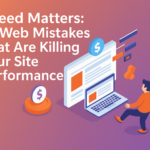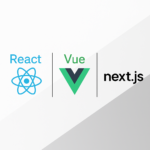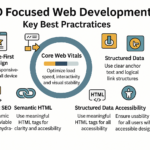SaaS is no longer just a tool—it’s the foundation of modern business. Traditional software requires costly upgrades and complex maintenance, making it difficult for small and medium-sized businesses to keep up. As we enter 2025, businesses need smart, secure, and scalable solutions, and SaaS is the perfect choice. With cloud-based applications, companies can cut costs, enhance security, and streamline operations without managing IT infrastructure. This article explores why SaaS is essential today and how its advanced features are transforming industries. The future is digital—embrace SaaS and unlock unmatched flexibility, efficiency, and growth!
Why SaaS is Essential for Everyone: Top Reasons You Should Know
1. Lack of Scalability & High Upfront Costs of Software
- Traditional software creates multiple challenges for you, including high upfront costs, complex maintenance, and the need for IT expertise. You’ll need to buy expensive upgrades and more licenses to support the growth. This process takes time and costs a lot, slowing down your progress. Without a flexible solution, you may struggle to add new users, increase storage, or upgrade features when needed. These challenges make it difficult for you to scale your business efficiently and keep up with changing demands.
2. Limited Accessibility and Collaboration
- On-premises software makes it hard for you to work smoothly, especially if your team is remote. It limits access to important data and needs frequent updates, which slows things down. Sharing files, managing tasks, and staying connected becomes difficult, causing delays and confusion. As more people work from different locations, these problems make it harder for you to stay productive. Without an easier solution, your team struggles to stay organized and work efficiently together.
3. Maintenance and Security Challenges
- Managing traditional software is hard because you have to handle updates, security patches, and backups yourself. This takes a lot of time and effort, and if something goes wrong, your system could be at risk. You also have to stay on top of security to protect your data from cyber threats. Without a reliable solution, keeping your software secure and updated becomes stressful and time-consuming, making it difficult for you to focus on more important tasks.
4. Data Silos and Integration Issues
- When you use different systems that don’t work well together, it creates confusion and slows down your work. Important data gets stuck in separate places, making it hard for you to access and use it efficiently. This leads to mistakes and delays in completing tasks. Without a solution that connects all your systems, your workflow becomes messy and unorganized. This makes it harder for you to manage your work smoothly and stay productive over time.
5. Limited IT Resources for Support and Maintenance
- If you don’t have a full IT team, managing software can be tough. Fixing problems, updating systems, and keeping everything secure takes time and effort. Without enough resources, these tasks can slow you down and distract you from more important work. This makes it harder for you to focus on growing your business or improving your services. Without a better solution, handling IT issues can become a major challenge and prevent you from staying productive.
6. Slow Innovation and Digital Transformation
- Traditional software makes it difficult for you to stay updated with the latest technology. Upgrading systems and adding new features often take too much time and money. As a result, you may fall behind while competitors adopt new tools and improve their services. Without a flexible solution, adapting to changes becomes slow and challenging. This limits your ability to grow and remain competitive in a fast-changing digital world, making it harder for you to succeed.
7. Complex Compliance and Regulatory Requirements
- Keeping up with security rules and laws can be hard. You have to follow strict guidelines like GDPR (General Data Protection Regulation) and HIPAA (Health Insurance Portability and Accountability Act), which takes a lot of time and effort. If you miss something, it could lead to serious problems or penalties. Managing security and compliance on your own can be stressful and confusing. Without a reliable system in place, it becomes difficult for you to protect sensitive data and meet all the required standards properly.
Here are some Next-Gen SaaS features that will shape the future of tech:
1. AI-Powered SaaS: Redefining Automation in 2025
- Intelligent Task Automation: Asana helps automate repetitive tasks like scheduling and task assignment. With its AI-driven features, you can set up recurring tasks, automatic reminders, and even prioritize tasks based on deadlines. This reduces manual work and helps you stay focused on more important tasks, improving efficiency and productivity while minimizing errors and ensuring smoother workflows.
- Enhanced Decision-Making: Tableau uses AI to analyze data and uncover patterns or trends that are hard to spot manually. It provides smart recommendations and visualizations, helping you make better decisions faster. By turning complex data into easy-to-understand insights, Tableau improves your decision-making process, allowing you to stay ahead in a competitive environment with data-driven choices.
- Predictive Analytics: HubSpot uses AI-powered predictive analytics to analyze customer data and forecast trends or outcomes. It helps you identify patterns in customer behaviour, predict future sales, and make smarter marketing decisions. With this tool, you can plan ahead, tailor your strategies, and stay prepared for future challenges, ensuring you stay competitive and make confident, informed decisions.
- Personalized User Interactions: Intercom uses AI to personalize your experience by learning from your interactions. It adapts to your preferences, offering smart suggestions and automating responses based on your needs. Whether it’s customer support or user engagement, Intercom tailors its services to you, making your work smoother, more efficient, and better aligned with your specific requirements, ultimately enhancing your overall experience.
- Automated Security Protocols: CrowdStrike uses AI to monitor your systems in real-time, automatically detecting and responding to potential threats. It identifies unusual behaviour, prevents security breaches, and ensures your data stays protected. With its automated security protocols, you don’t need to manually monitor threats, allowing you to focus on your work while being confident that your systems are secure.
2. Vertical SaaS: Industry-Specific Solutions Gaining Momentum
- Tailored for Specific Industries: Veeva Systems is a vertical SaaS tool designed for the healthcare and life sciences industry. It offers industry-specific solutions to manage clinical data, regulatory compliance, and customer relationships. With its ready-to-use features, Veeva helps you meet industry standards, improve operational efficiency, and make informed decisions, ensuring your business stays competitive and compliant within the healthcare sector.
- Better Compliance and Security: CompliGen is a vertical SaaS tool designed for industries that require strict regulatory compliance, like healthcare and finance. It helps you follow industry rules and keeps your data secure with built-in encryption and monitoring features. By ensuring compliance, CompliGen reduces risks and prevents legal issues, allowing you to focus on growing your business without worrying about security threats or fines.
- Improved Efficiency and Accuracy: Zoho CRM automates routine tasks like data entry, lead management, and follow-up reminders, helping you complete tasks faster with fewer mistakes. It offers industry-specific features, ensuring smooth and accurate workflows. By reducing manual work, Zoho CRM allows you to focus on growing your business without worrying about errors, improving efficiency and productivity across your organization.
- Faster Implementation and ROI: Procore is a vertical SaaS tool designed for the construction industry. It helps you get started quickly with features tailored to construction management, such as project tracking, budgeting, and team collaboration. With its industry-specific tools, Procore saves you time and effort, enabling you to see faster results and a quicker return on investment, helping your construction business grow efficiently.
- Deeper Industry Insights: Sisense provides detailed insights by analyzing industry-specific data and visualizing it in an easy-to-understand format. It helps you identify trends, make informed decisions, and improve strategies with accurate data. By using Sisense, you can stay ahead of competitors, discover new opportunities, and drive business growth more effectively, all while utilizing real-time, actionable insights.
3. Subscription Fatigue: The Rise of Usage-Based Pricing Models
- Increased Flexibility: In SaaS, AWS Lambda gives you more control by letting you pay only for what you use. This means you don’t have to commit to a fixed plan or pay for features you don’t need. It allows you to adjust your spending based on your actual usage, making it easier to manage your budget efficiently.
- Reduced Costs: With Snowflake, you only pay for the services you actually use. This helps you avoid spending money on features that you don’t need. By cutting unnecessary expenses, you can manage your budget better and save more. It’s a cost-effective way to get the services you need without overspending.
- Improved Customer Satisfaction: Twilio makes you feel more satisfied because you only pay for what you use. This gives you a sense of fairness and control over your spending. Since you aren’t overpaying for unnecessary features, you feel more confident that you’re getting good value, which increases your trust and satisfaction with the service.
- Better Value for Money: With usage-based pricing, you get better value for your money because you only pay for what you use. There’s no need to spend extra on features you don’t need. For example, Stripe lets you pay per transaction, so you keep costs low while still accessing powerful payment processing tools that grow with your business.
- Encourages Efficiency: Usage-based pricing encourages you to be more efficient because you only pay for what you use. This helps you avoid waste and manage resources wisely. For example, Datadog charges based on the volume of data you monitor, so you focus on tracking only what’s essential, reducing unnecessary costs while maintaining performance.
4. SaaS for Remote Work: Enhancing Collaboration and Productivity
- Seamless Communication: Slack helps you communicate easily with your team through chat, video calls, and file sharing. It allows everyone to stay connected and share ideas in real-time, no matter where they are. This keeps the workflow smooth and ensures that important information is shared quickly, making teamwork more effective and efficient.
- Centralized Project Management: Trello helps you manage projects by keeping all tasks organized in one place. You can create boards, assign tasks, and track progress easily. This makes it simple to collaborate with your team and stay updated on project status. With Trello, you avoid confusion and ensure that everyone knows their responsibilities.
- Secure Data Access: Dropbox allows you to access important files securely from anywhere. You can store, share, and manage documents easily while ensuring your data is protected. With features like encryption and secure sharing, you don’t have to worry about losing or exposing sensitive information. This keeps your files safe and available whenever you need them.
- Automated Workflow Management: Zapier helps you automate repetitive tasks by connecting different apps and letting them work together. You can create workflows that automatically transfer data between apps, saving you time and effort. This means you don’t have to do manual tasks, allowing you to focus on more important work while keeping everything running smoothly.
- Improved Team Collaboration: Google Workspace helps you collaborate with your team by allowing real-time editing and sharing of documents, spreadsheets, and presentations. You can easily work on the same file with your teammates, leave comments, and make updates instantly. This makes teamwork smoother and ensures that everyone stays on the same page, improving overall productivity.
5. SaaS and IoT: Enabling Smarter Business Operations
- Real-Time Data Insights: With Microsoft Azure IoT, you get real-time data insights to make smarter decisions. IoT sensors collect data, and SaaS platforms analyze it instantly. It helps businesses track equipment performance, spot issues early, and improve efficiency. This means you can react quickly and keep everything running smoothly without delays.
- Remote Monitoring & Control: With Bosch IoT Suite, you can monitor and control devices from anywhere. IoT sensors send data to a SaaS platform, so you can track and adjust settings in real-time. It lets businesses remotely manage machines, improving efficiency and reducing downtime, even when you’re not on-site.
- Predictive Maintenance: With Siemens MindSphere, you can prevent equipment failures before they happen. IoT sensors track machine performance and analyze the data to predict issues. This helps you fix problems early, reducing downtime and saving money. You stay ahead by maintaining machines only when needed, not too late or too soon.
- Scalability & Flexibility: With AWS IoT Core, you can easily scale your operations as your needs grow. It lets you connect more devices without needing extra hardware. You only pay for what you use, so you stay flexible while expanding your business smoothly, without worrying about high upfront costs or technical limits.
- Enhanced Security & Compliance: With IBM Watson IoT, you can keep your data safe and follow security rules easily. It helps protect connected devices with encryption and secure access. This means hackers can’t easily steal data, and you meet industry security standards, keeping your business operations safe and running smoothly.
6. SaaS Security in 2025: Prioritizing Data Protection
- Advanced Encryption: In 2025, SaaS security focuses on protecting your data with smarter technology. A tool like Microsoft Defender for Cloud Apps helps detect threats in real-time and prevents unauthorized access. It ensures that only trusted users can access your files, keeping your personal and business information safe from hackers and cyberattacks.
- Zero Trust Security Model: Okta, a SaaS tool verifies your identity every time you log in, even if you’ve used the device before. This keeps hackers out, making sure only you can access your accounts, apps, and important business data securely.
- AI-Powered Threat Detection: In 2025, AI helps stop cyber threats before they cause damage. A tool like CrowdStrike Falcon uses machine learning to detect suspicious activity and block hackers in real-time. This means your data stays safe, and you don’t have to worry about hidden attacks stealing your personal or business information.
- Compliance Automation: OneTrust automates compliance by tracking data privacy laws like GDPR. It helps you avoid fines by ensuring your business follows the latest security policies, so you don’t have to worry about legal issues or data protection mistakes.
- Decentralized Identity Management: Microsoft Entra Verified ID lets you log in without relying on passwords. Instead, you use a secure digital ID that can’t be easily stolen. This means you stay protected from hackers and don’t have to remember complex passwords anymore.
7. Sustainability in SaaS: Greener Tech for a Better Future
- Energy-Efficient Data Centers: SaaS companies are making data centres greener by using less energy. A tool like Google Cloud runs on renewable energy, reducing pollution while still giving you fast and reliable service. This means every time you store files or run apps, you’re using cleaner technology that helps protect the planet for the future.
- Optimized Cloud Computing: A tool like AWS Auto Scaling automatically adjusts server power based on demand, so no energy is wasted. This means you get fast performance while using fewer resources, helping the environment without sacrificing speed or reliability.
- Paperless Operations: Adobe Sign lets you sign documents digitally instead of printing them. This makes work faster, easier, and better for the environment. You don’t need paper, ink, or storage space—just a few clicks to get things done the eco-friendly way.
- Remote Work Enablement: SaaS makes remote work easier, helping you reduce travel and office energy use. Zoom lets you attend meetings from anywhere, so you don’t need to commute. This saves fuel, cuts pollution, and helps the environment while keeping you connected with your team, no matter where you are.
- Carbon Offsetting Initiatives: Salesforce Net Zero Cloud is a SaaS tool, which tracks and reduces carbon emissions for businesses. This means every time a company uses cloud services, they can measure their impact and invest in green projects like tree planting to help create a cleaner, healthier planet.
8. Low-Code/No-Code SaaS: Empowering Citizen Developers
- Easy App Development: With Bubble, you can build apps without coding skills. It lets you create websites and apps using simple drag-and-drop features. This means you don’t need to be a programmer to bring your ideas to life, making app development easier and faster for anyone.
- Faster Time to Market: With OutSystems, you can launch apps quickly without waiting for developers. It helps you build and release apps fast using pre-built templates and simple drag-and-drop features. This means you can turn your ideas into working apps in less time, getting your project out there much faster.
- Cost Savings: With Appgyver, you save money by building apps without hiring expensive developers. It lets you create apps using a simple drag-and-drop interface. This means you can develop your own software at a lower cost, making it easier to bring your ideas to life without a big budget.
- Flexibility & Customization: With Glide, you can customize apps to fit your needs without coding. It helps you turn spreadsheets into mobile apps with easy drag-and-drop features. This means you can design apps your way, making changes anytime without needing a developer or technical skills.
- Increased Productivity: With Make (formerly Integromat), you can work faster by automating tasks. It connects your favourite apps and automates workflows without coding. This means you save time on repetitive tasks, like sending emails or updating spreadsheets, so you can focus on more important work and get things done more efficiently.
9. SaaS and Blockchain: Securing Transactions and Enhancing Trust
- Enhanced Data Security: With IBM Blockchain, your data is more secure because it’s stored in a decentralized way. It protects information by making it nearly impossible for hackers to change or steal data. This means you can trust that your transactions and records are safe from tampering or cyberattacks.
- Transparent Transactions: With Hyperledger Fabric, you can trust that transactions are real and secure. It records every transaction on a tamper-proof ledger. This means no one can secretly change the data, reducing fraud and making sure everything stays fair and transparent for everyone involved.
- Smart Contracts: With Ethereum, you can make secure agreements without middlemen. It uses smart contracts to automatically complete deals when conditions are met. This means you don’t have to rely on lawyers or banks—everything is handled securely and fairly through code, saving you time and money.
- Improved Identity Management: With Civic, your identity stays safe from hackers. It securely stores your personal information using blockchain, so only you can access it. This means you don’t have to worry about identity theft, and you can verify yourself online without sharing too much private data.
- Decentralized Cloud Storage: Storj helps you to store your files securely across multiple locations. It decentralized cloud storage, meaning your data isn’t kept in one place where hackers can easily attack it. This makes your files safer, protects your privacy, and ensures you can always access them without fear of losing important information.
In conclusion, as SaaS continues to evolve, data privacy and security will be more important than ever. By 2025, SaaS tools will seamlessly integrate across platforms, creating a unified and highly efficient tech ecosystem. With enhanced connectivity, you’ll be able to effortlessly link multiple SaaS applications, optimizing workflows and boosting productivity. Regardless of your industry—healthcare, finance, manufacturing, or beyond—SaaS will enable you to streamline operations, meet regulatory requirements, and enhance overall performance. This transformation will improve efficiency, simplify processes, and empower smarter, data-driven decisions, ensuring your business remains competitive in the digital era. The future of SaaS is here—are you ready?


